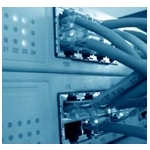 Nearly three-quarters of U.S. Internet users connected at speeds above 2 Mb/s in the second quarter of 2010, according to new data released this week from Akamai. That figure was up 4.8% from the same period a year earlier. The average maximum connection speed in the U.S. was 16 Mb/s—up 18% over the previous year.
Nearly three-quarters of U.S. Internet users connected at speeds above 2 Mb/s in the second quarter of 2010, according to new data released this week from Akamai. That figure was up 4.8% from the same period a year earlier. The average maximum connection speed in the U.S. was 16 Mb/s—up 18% over the previous year.
Eastern states continue to have the highest connection speeds. Delaware, New Hampshire, Rhode Island, Connecticut, Maryland, Maine, New York and New Jersey all had 78% or more of Internet users connecting at speeds above 2 Mb/s, with Delaware leading the pack at 98%. The only states outside the east in the top ten were Hawaii and Nevada, which had 87% and 82% of Internet users, respectively, connecting at speeds above 2 Mb/s.
When the bar is set higher, Delaware remains at the top of the list, with 67% of Internet users in that state connecting at speeds of 5 Mb/s or higher. Delaware was followed by New Hampshire, Rhode Island, New Jersey, Maryland, District of Columbia, Massachusetts, Nevada, Connecticut and New York, all of which had between 37% and 53% of Internet users connecting at speeds above 5 Mb/s.
Forty-six states and the District of Columbia saw their percentages of users connecting at speeds above 2 Mb/s increase between second quarter 2009 and second quarter 2010. But only 27 states and D.C. saw an increase in the number of users connecting at speeds of 5 Mb/s or more during the same period, driven by decreases in 37 states and D.C. between first and second quarter 2010.
Akamai researchers hypothesize that the drop between first and second quarter may have been related, in part, to more people watching long-form media content, which consumes bandwidth limited to no more than about 5 Mb/s. In particular, researchers noted the popularity of streaming video from the 2010 winter Olympics.


